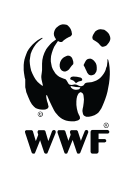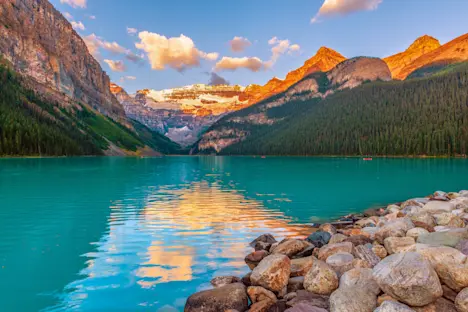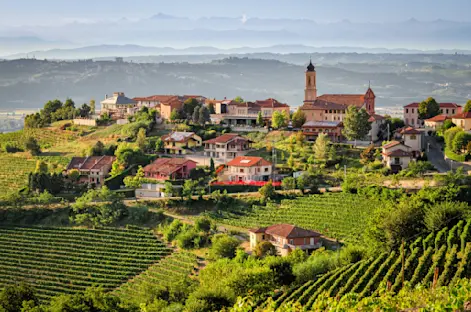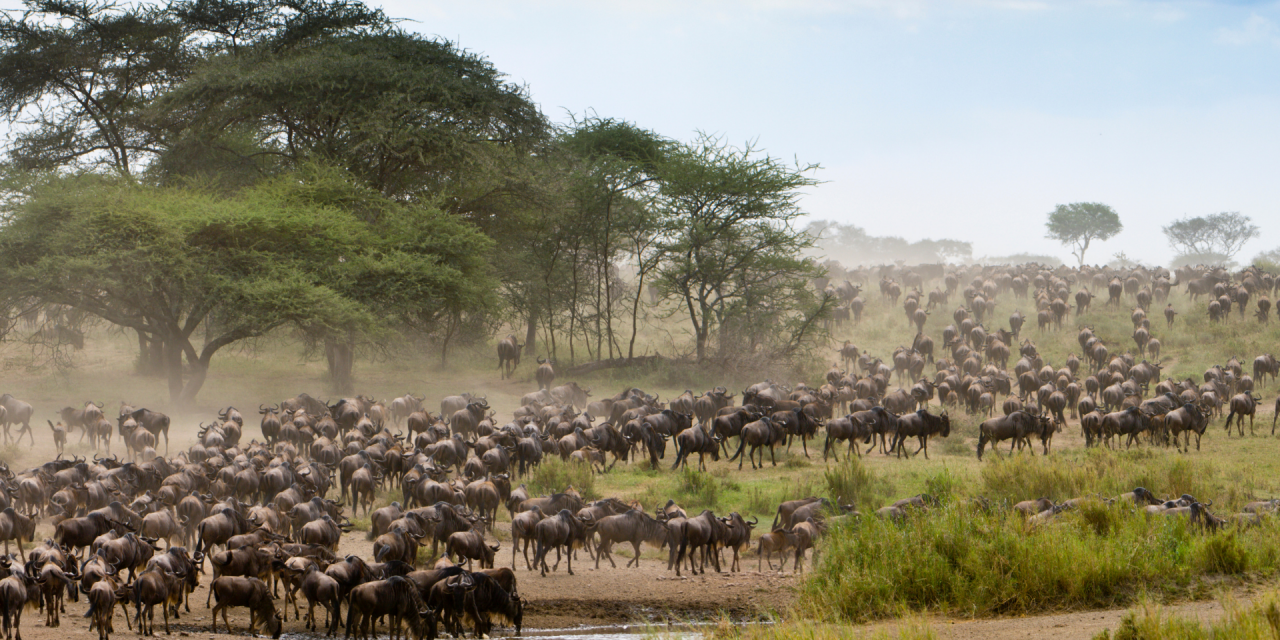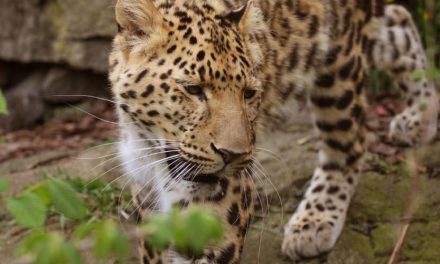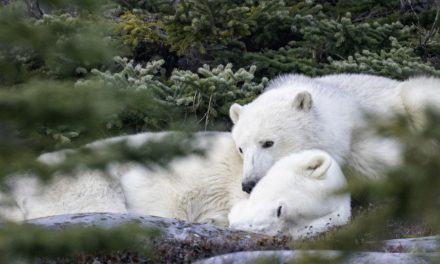Where the Earth Moves
Every year, a pulse begins in the heart of East Africa. It starts as a low vibration on the open plains, a sound like distant thunder rolling across the grasslands. Then, the land itself begins to move.
Columns of wildebeest, more than a million strong, flow across the horizon. Alongside them, hundreds of thousands of zebras and gazelles join the journey. Together, they begin their ancient circuit across the Serengeti of Tanzania and into the Maasai Mara in Kenya to form one of nature’s greatest spectacles. This is the “Great Migration,” the largest overland migration on Earth, the true circle of life.
The journey covers a circuit of roughly 500 to 800 miles and never truly stops. It is not a single event with a beginning and an end, but rather a constant cycle year after year.
The Epic Journey
The migration is primarily driven by the animals’ need to find fresh grazing and water, which are dependent on rainfall patterns. Each year, the herds follow the rains.
From December to March, the southern Serengeti becomes a nursery: over half a million wildebeest calves are born in just a few weeks, taking their first shaky steps while on a stage already set with danger.
By May, the grass dries and droughts begin to arise, and the herds prepare to move, guided by a predisposition older than memory. They travel north, across hundreds of miles, toward greener pastures.
July marks the most perilous part of their journey as the herds mass in the western Serengeti, preparing for the Grumeti River crossing. The migration is not without risk as crossing rivers means facing about 3,000 crocodiles, patiently waiting beneath the surface for a kill. Additionally, with the Serengeti being estimated to have the largest lion population (3,000-4,000 individuals) in Africa, these hooved beasts face yet another threat.
By October, the rains shift again and the herds return south, completing a loop that has defined life on these plains.
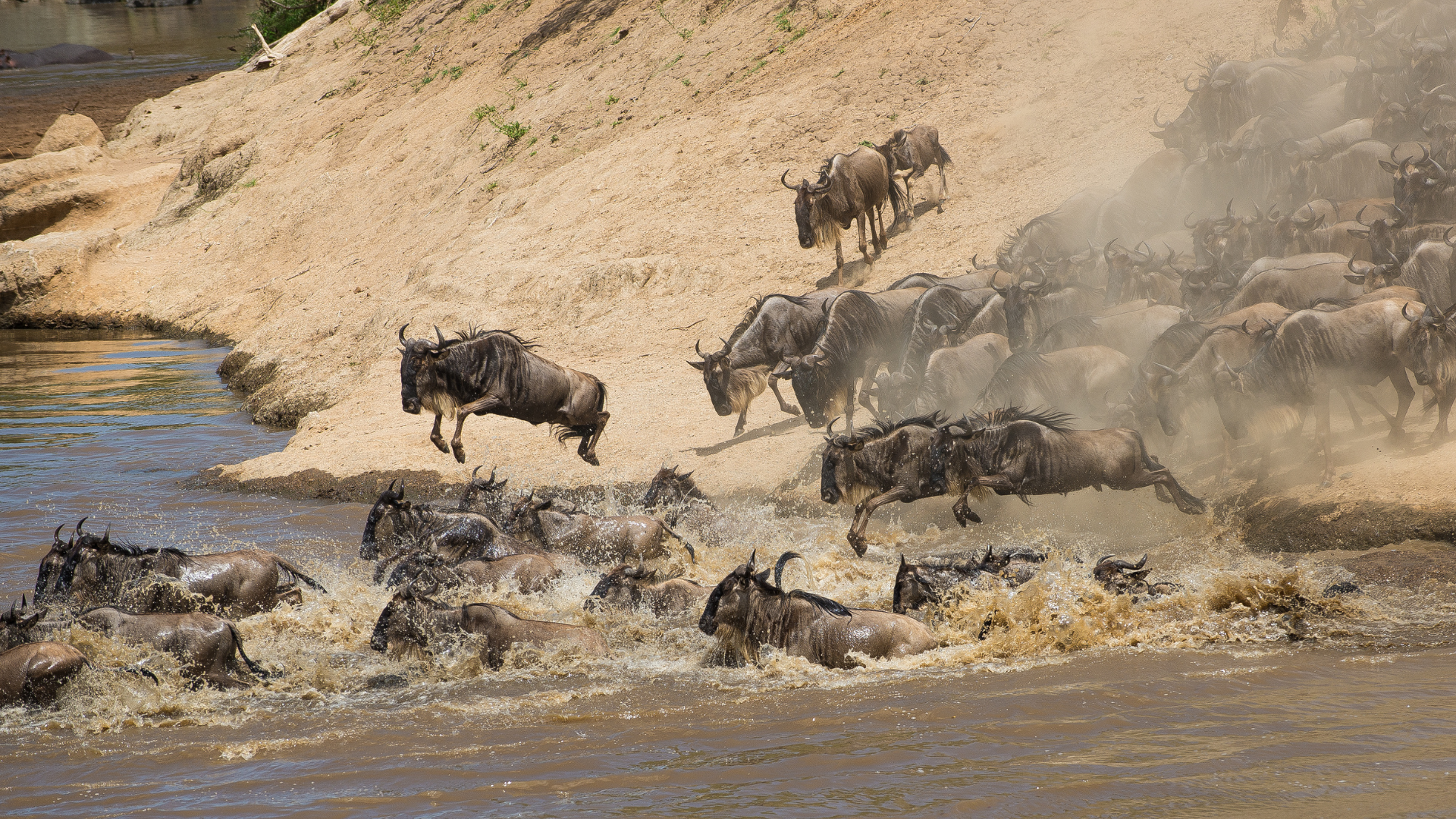
© Kyle Levine / Nat Hab
An Ecosystem in Motion
The Great Migration is more than the movement of animals; it is the foundation of one of the most productive ecosystems on Earth. As the herds of wildebeest, zebras and many more species travel, they graze the grasses down, stimulating new growth and maintaining the open savanna. Their waste returns nutrients to the soil, enriching the land for countless other species.
Every step of the migration carries risk. Predators follow the herds, knowing that where there are wildebeest, there will be food. But for every life lost, the migration breathes life into the land. Nutrients from the animals fertilize the soil.
Their movements shape the grasses. Their presence feeds thousands of predators and scavengers. This constant motion supports an intricate food web. Without this constant motion, the Serengeti would not be the same.
Wildebeest also play a crucial role in the savanna’s carbon balance. Their grazing helps maintain healthy grasslands, which store significant amounts of carbon in their root systems. When wildebeest populations decline, grass grows taller and eventually dies back, leading to increased wildfires that release stored carbon into the atmosphere.
By keeping grass short and nutrient cycles active, the herds act as climate heroes of the savanna, helping reduce carbon emissions and preserve the health of the landscape.

© naturepl.com / Anup Shah / WWF
A Natural Wonder
The Great Migration’s longstanding role depends on safeguarding the Serengeti–Maasai Mara ecosystem in its entirety. This means protecting both the grasslands and the migratory corridors that connect them, ensuring water sources remain viable, and working with local communities to support conservation while providing economic benefits through tourism.
With its vast scale of interconnected species and fixed rhythms, the Great Migration becomes more than an extraordinary wildlife event but rather a living embodiment of the circle of life. Sustaining not only the wildebeest, zebras and gazelles, but the very landscape itself.
Protecting it ensures that this circle remains unbroken; that the plains of East Africa will continue to move with the thunder of hooves for generations to come.
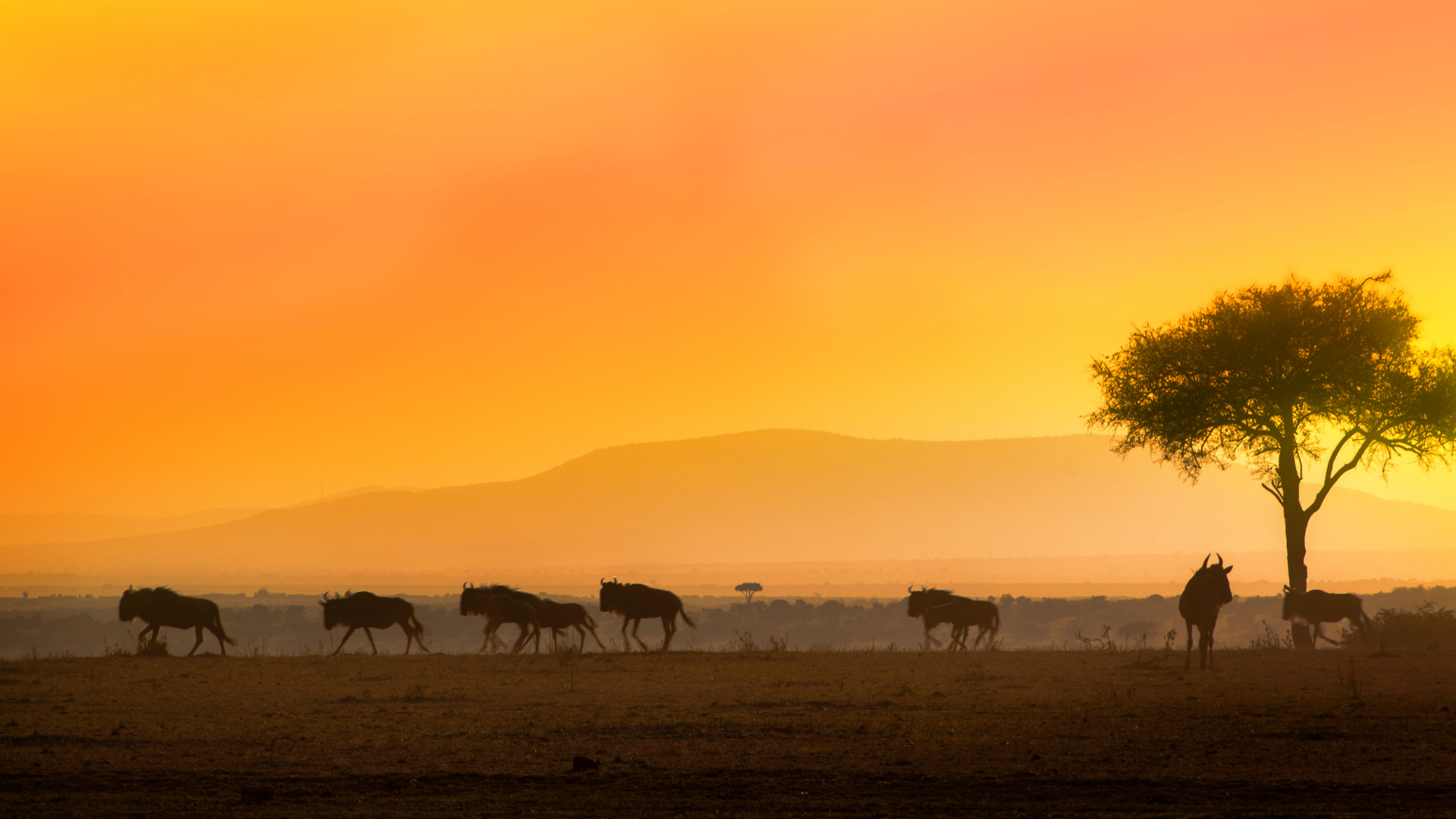
© Diana Rudenko / WWF
Fun Facts Serengeti–Maasai Mara Ecosystem:
- Mara” means “spotted” in the Maa language because of the short bushy trees that dot the landscape.
- Predator Capital: The Serengeti hosts Africa’s largest population of lions—estimated at 3,000–4,000 individuals.
- All members of the “Big Five” – lions, African leopards, African bush elephants, African buffaloes and black rhinoceros – are found all year-round.
- The name “Serengeti” comes from the Maasai word “Siringet,” meaning “endless plains”.
- The whole ecosystem stretches over 12,000 square miles across Tanzania and Kenya.
- Serengeti National Park is a UNESCO World Heritage Site; the Maasai Mara is a National Reserve in Kenya.
- Migration Scale: 1.5 million wildebeest, 200,000 zebras, and hundreds of thousands of gazelles participate annually.
